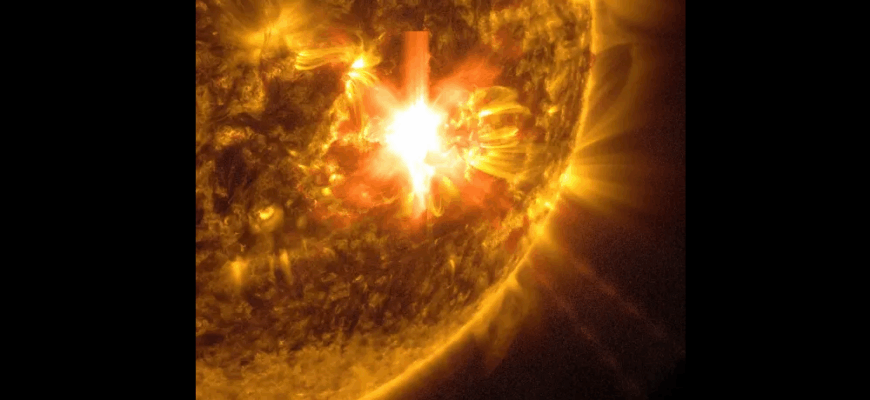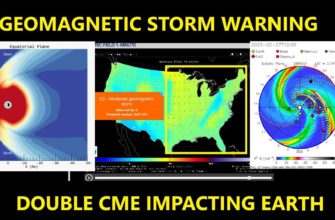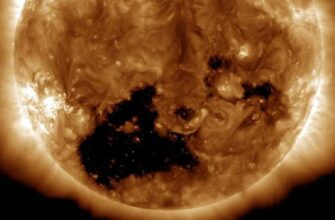In a powerful celestial event on this Tuesday morning, August 19, 2025, the Sun erupted with a significant M-class solar flare. Recorded at 07:39 Moscow time, this particular outburst, classified as M1.1, has set in motion a series of events that are expected to trigger moderate geomagnetic storms on Earth. This energetic display serves as a potent reminder of the dynamic relationship between our planet and its fiery parent star.
Understanding the Sun`s Energetic Display
Solar flares are essentially vast explosions on the Sun`s surface, releasing immense amounts of energy in the form of radiation. These events are categorized by their X-ray intensity, with M-class flares being considered medium-sized but still quite potent. They are capable of causing noticeable effects on Earth, ranging from minor radio blackouts to geomagnetic disturbances.
This latest M1.1 flare, meticulously observed by the solar astronomy laboratory of the Space Research Institute (IKI) of the Russian Academy of Sciences, arrives concurrently with the appearance of a new “coronal hole.” These holes are regions within the Sun`s outer atmosphere (the corona) where the plasma is noticeably less dense and cooler. They act as open gateways, allowing high-speed solar wind to stream unimpeded into space. When this accelerated stream of particles, often boosted by the energy of a solar flare, collides with Earth`s protective magnetic field, the result is a geomagnetic storm.
Earthly Repercussions: From Infrastructure to Auroras
The impending moderate geomagnetic storm is far from a mere academic exercise; it carries tangible implications for our increasingly interconnected world and the subtle workings of nature:
- Impact on Power Grids: Geomagnetic storms can induce unwanted currents in long power transmission lines. While typically not severe for moderate storms, these induced currents can lead to voltage fluctuations and, in rare instances, trigger localized disruptions or the need for protective shutdowns in parts of the electrical grid. It’s a compelling cosmic nudge, reminding us of our reliance on stable electromagnetic fields.
- Communication and Navigation Systems: Shortwave radio communications, crucial for various sectors including aviation, maritime operations, and emergency services, can experience interference or temporary blackouts. Similarly, satellite-based navigation systems like GPS might suffer from reduced accuracy or intermittent signal loss, potentially making your mapping app a bit more “adventurous” than usual.
- Effects on Wildlife Migration: Though still an area of active research, there is evidence that some animal species, particularly birds and certain marine creatures, rely on Earth`s magnetic field for their migratory journeys. A disrupted geomagnetic field could potentially disorient these natural navigators, leading to deviations in their traditional routes.
- Enhanced Auroral Displays: For aurora enthusiasts and casual stargazers alike, the storm offers a spectacular silver lining. Increased solar activity often means that the stunning Northern Lights (Aurora Borealis) and Southern Lights (Aurora Australis) will be visible from latitudes further away from the Earth`s poles than usual. So, while some may be checking their gadgets, others will be gazing skyward, hoping for a vibrant celestial light show.
The Human Factor: A Continuing Scientific Debate
Regarding the direct impact of geomagnetic storms on human health, the scientific consensus remains cautiously ambiguous. Anecdotal reports frequently surface, detailing symptoms such as headaches, fatigue, or general unease during periods of solar activity. However, establishing a definitive, universally accepted clinical link between solar flares or geomagnetic storms and specific human health ailments continues to be a complex challenge for researchers. So, if you find yourself feeling unusually drained or inexplicably compelled to reorganize your sock drawer today, it`s worth noting that while the Sun might be playing a role in the broader cosmic symphony, the precise melody it plays on human physiology is still being deciphered.
A Constant Vigil
The continuous monitoring efforts by institutions like IKI RAS underscore the vital importance of space weather forecasting. In a world increasingly dependent on sophisticated satellite networks and robust ground-based infrastructure, understanding and anticipating these solar phenomena is not just a scientific pursuit but a practical necessity. Each solar flare, each coronal hole, provides invaluable data, gradually completing the complex puzzle of our Sun`s behavior and its profound, far-reaching influence on our planetary home.
As the geomagnetic storm unfolds in the days to come, it serves as a powerful reminder that the magnificent star that fuels all life on Earth also possesses a formidable power, ensuring that our existence under its glow is anything but mundane.









